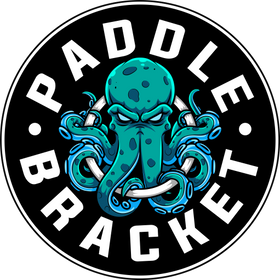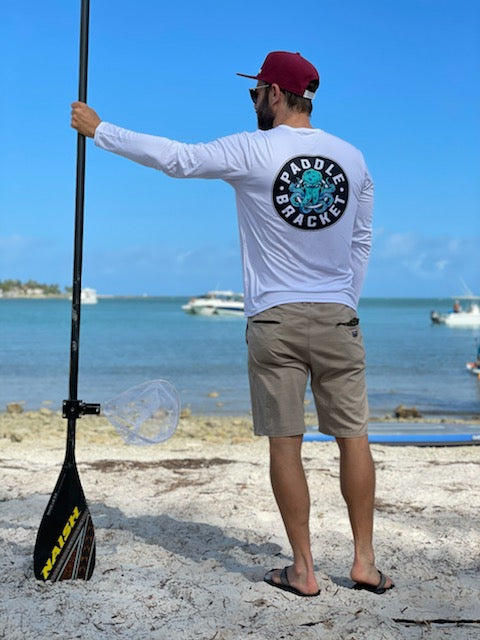5 TIPS FOR HOSTING A SUCCESFUL PADDLE CLEANUP: MAKING A DIFFERENCE ON THE WATER

Photo Credit: Tanya Kristina
Paddleboarding is not just an exciting water sport; it also presents an excellent opportunity to engage in environmental conservation efforts. Organizing a paddle cleanup event can bring together like-minded individuals, promote eco-consciousness, and make a tangible impact on water bodies. In this blog post, I will discuss the steps to hosting a successful paddle cleanup, highlighting the importance of such initiatives and providing practical tips to ensure a safe and rewarding experience for all participants.
-
Understanding the Importance of Paddle Cleanups: Paddle cleanups combine the joys of water recreation with environmental stewardship. They play a vital role in maintaining the health and sustainability of our waterways, promoting biodiversity, and protecting aquatic ecosystems. By removing trash and debris from the water, paddle cleanup events create a safer and cleaner environment for wildlife, other water enthusiasts, and future generations to enjoy.
-
Planning and Preparation: a. Identify a Suitable Location: Choose a water body in need of cleanup, such as a river, lake, or beach. Research local regulations, permits, and any restrictions related to cleanup activities. b. Set a Date and Time: Select a convenient time for participants, considering weather conditions and tides. Weekends or holidays often work well to maximize participation. c. Recruit Volunteers: Promote the event through social media, local community boards, and outdoor enthusiasts' networks. Collaborate with environmental organizations, paddling clubs, and schools to increase outreach. d. Arrange Equipment: Ensure you have enough paddleboards, canoes, or kayaks for participants. Partner with rental shops or seek donations from individuals willing to lend their watercraft. Also, gather cleanup supplies like gloves, garbage bags, and nets.
-
Safety First: a. Assess Participants' Skill Levels: Ensure that participants have basic paddling skills and are comfortable in the chosen water conditions. Encourage novices to take lessons beforehand or pair them with experienced paddlers. b. Provide Safety Briefings: Conduct pre-event safety briefings, emphasizing the importance of wearing personal flotation devices (PFDs) and adhering to proper paddling techniques. Educate participants on potential hazards, such as strong currents or submerged objects. c. Have a Communication Plan: Establish a clear communication system among participants, using whistles, radios, or smartphone apps. Designate a lead organizer and multiple safety marshals to maintain oversight during the cleanup.
-
Execution of the Paddle Cleanup: a. Welcome and Orientation: Begin the event with a warm welcome and an overview of the cleanup objectives and rules. Emphasize safety, teamwork, and the significance of the collective effort. b. Assign Cleanup Areas: Divide the water body into sections and assign each group or individual a specific area to clean. Encourage participants to focus on both visible debris and hard-to-reach spots. c. Document the Cleanup: Encourage participants to take photos or videos of their progress. Share these images on social media to raise awareness and inspire others to take similar actions. d. Waste Disposal: Arrange designated collection points along the shoreline for participants to unload collected trash. Coordinate with local waste management authorities for proper disposal or recycling of the collected debris.
-
Post-Cleanup Reflection and Celebration: a. Thank Participants: Express gratitude to all volunteers for their time, effort, and dedication to the cause. Highlight the collective impact achieved and the positive difference made to the water body and surrounding environment. b. Follow-Up Initiatives: Discuss ongoing initiatives or partnerships with local environmental organizations to sustain the momentum created by the paddle cleanup. Encourage participants to continue advocating for clean waterways and to spread awareness among their networks. c. Celebrate Achievements: Organize a post-cleanup gathering or social event to celebrate the collective achievements. Share stories, experiences, and future aspirations, reinforcing the importance of maintaining a clean and sustainable environment.
Hosting a paddle cleanup event is a fantastic way to combine your love for paddleboarding with environmental conservation. By following these steps and guidelines, you can organize a successful paddle cleanup, create a positive impact on water bodies, and inspire others to engage in similar initiatives. Let's paddle together, protect our waterways, and make a lasting difference for generations to come.
PROTECT WHAT YOU LOVE & PADDLE WITH A PURPOSE



Leave a comment